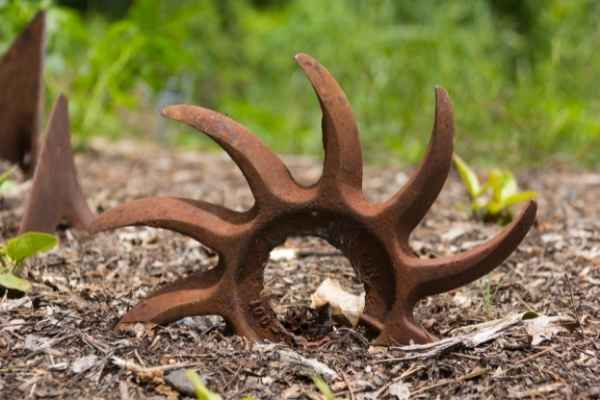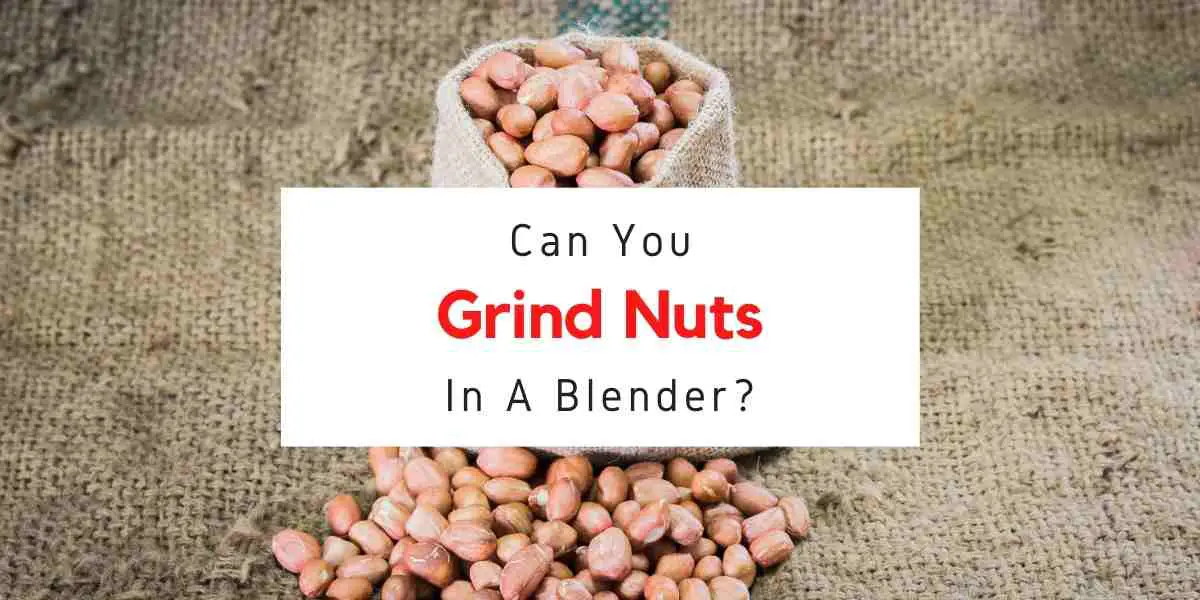Blender blades rust because they are made of metal. When metal is exposed to water, it reacts with the oxygen in water and forms an oxide layer that protects the blade from further corrosion.
In this article, we will talk about how to prevent rusting of blender blades and why they rust in the first place.
Why Do Blender Blades Rust?

Blender blades are made of metal, which is why they rust when exposed to water. When your blender runs, the blade spins very close to the bottom of the jug.
If you are using a common household blender that does not have an anti-rust coating, then you should clean it after every use or place it in a container with water and leave overnight so that no moisture remains inside the jug.
Otherwise, you will be exposing your blender blade to moisture even if you just rinse it out with water.
There are some high-end blenders which have an anti-rust coating on the blades. If your blender has this, then you do not have to wash it after every use.
However, if you decide to wash it anyway, then you should remember that washing your blender calls for extra caution.
How To Remove Rust From Blender Blades
1. Determine whether your blender is dish washer safe.
If it is, then just put the blender blades in a dishwasher and they will come out sparkling clean. Rinse them with water before using. If they are not dish washer safe, then you have to go the old-fashioned way – by hand.
2. Fill a small bowl with vinegar and leave it for 30 minutes so that the vinegar dissolves any rust on the blade.
3. After 30 minutes, rinse off the blade under running water or use a wet paper towel to wipe off all rust from the blade. Some people suggest pouring salt over rusted areas of blades as this helps to dissolve even more rust from the surface of blades, but this may damage the blades, so make sure you do it with caution.
4. Dry completely then use a paper towel dabbed with olive oil to rub over the surface of the blade to prevent rust from forming again in future.
5. If your blender is dishwasher safe and you did not rinse off any rust particles before throwing the blades into the dishwasher, then simply run a clean cycle manually with vinegar and all rust will be removed from your blender blades!
Prevention Tips: How To Avoid Your Blender Blade From Rusting?
1. After using your blender, make sure to rinse it out under running water.
2. Always hand-wash your blender if they are not dishwasher safe.
3. Place a thin layer of cooking oil over the surface of the blade after washing them by hand to further prevent rust from forming again in future and food particles sticking to the surface of the blades and making them harder to clean later on.
4. If you want an easier solution, then simply purchase a common household blender which has an anti-rust coating on its blades so that you do not have to spend extra time and effort on rust removal.
5. If your blender is dishwasher safe, then it is best to wash the blade in a dishwasher before running a clean cycle manually with vinegar.
6. After washing the blade by hand, dry completely before applying olive oil over the surface of the blade to prevent rust from forming again in future.
7. Let the blades dry after applying cooking oil over its surface. Running a few cleaning cycles will also help to remove any excess olive oil and food particles stuck on the surface of the blade.
8. It is advisable to purchase an anti-rust coating spray that can be sprayed over the surface of your blender blades before each use if you do not want to spend too much time and effort removing rust or buying a new blender every time they get rusty. Most common household blenders have these coatings already installed so you need not worry about it until it wears off!
9. If money is no object to you then getting a good quality blender that has powerful blades will do the trick to prevent rust from forming. Inexpensive options may take a toll on your health because they will not last for long and can cause problems in your kitchen too!
Remember that prevention is always better than cure! So make sure to clean and scrub rust stains from your blades as soon as possible before they ruin them completely by corroding its entire surface.
How Long Does It Take For Blender Blades To Get Rusty?
This depends on the amount of use and storage conditions.
Blender blades start to get rusty when moisture enters the interior where the blade is.
Even if you clean your blender immediately after each use with just water, some residual moisture easily accumulates in the jug because it is hard for water to completely dry out when there are small holes in the bottom or sides of containers.
If left idle with no further usage then eventually all blenders will start collecting moisture and food particles that may cause rust to form on their blades.
If you want to know how long it takes for blender blades to rust, then just check the blade after every use if there is any visible sign of rust. The longer your blender is idle without further usage the more evident the signs of rust will be.
If possible, run a cleaning cycle with vinegar or dishwasher liquid in between uses so that moisture does not accumulate inside the jug where blenders are stored. If you started seeing funny funny black brownish-red stains on your blender blades? Then this means they are already rusty!
How To Clean Your Blender Blades – Removing Rust
Before cleaning the blades, unplug your blender to avoid sparking.
A lot of times when dealing with rust, there is always a chance that you may get an electric shock or damage other parts in your blender if you do not unplug it first.
You can use a wire brush to clean the surface of blade very carefully and if possible peel off any remaining pieces of rust from its surface by hand or simply scrub it softly with a sponge.
Do not exert too much pressure on the blade otherwise, you might end up scratching it’s surface!
If blenders are dishwasher safe then placing them in a dishwasher will ensure all remaining food particles and rust stains are removed from it. You can even fill a jar with vinegar or lemon juice and then run a cleaning cycle.
This will help get rid of any stubborn remaining stains that are still visible on the blade! If you just want to get rid of rust without too much effort, then it is best to spray an anti-rust coating that can be bought cheaply from local stores or online as well as online as an alternative solution.
How To Remove Food Particles From Your Blender
Food particles can accumulate inside your blender after a few uses and if left idle for a long time they will eventually dry up and form clumps that may cause rusting problems.
However, just like rust removal, cleaning and scrubbing food particles off the surface of your blades should not be too difficult because you know what’s best for the health of your body.
All you need to remember is to unplug it first before washing or cleaning out dirt from the blade as mentioned above. Do not exert too much force as this might damage your steel blades as well as spoiling your healthy diet efforts!
To clean any stubborn food particles stuck between the pores of blades, use vinegar or lemon juice sparingly or sprinkle some drops of soapy water or vinegar and rub it with a sponge to clean the blade!
Blender blades rust because they are mostly made from high quality steel. However, these blades can corrode and get rusty if not taken proper care of.
Another cause that triggers the oxidation process is humidity and water left on the blades and lids after using your blenders when preparing meals in your kitchen.
The longer they are idle then more likely you will see rust spots form on their blades when they are used again next time.
When it comes to prevention, you should only use dishwasher safe blender cups for cleaning purposes. You may also need to remove the lid where food particles tend to accumulate after each use.
And remember not to stack them because this will cause the blades to touch one another and you may have problems cleaning rust out of there after a few uses!
If your blender is stainless steel, then you can clean it with regular dishwashing liquid or even baby soap. But make sure that all food particles are removed from its surface first before doing so because if not they might damage the blade’s surface when your blender is turned on again next time!
Protective coatings do not last long but should be reapplied once in a while especially if your blenders are used frequently every day for preparing family meals. There are other alternatives that can help replace these protective coatings as well!
Is It Safe To Use A Blender With Rusty Blades?
No, it is not safe to use a blender with rusty blades because the sharp edges of the blade could end up cutting your fingers if this happens. This might result in serious injuries that may delay you from doing other things or even cause you to lose money if you are unable to work overtime due to any impairment!
If you do plan on using them then make sure that they are turned off first before cleaning out rust spots from their surfaces!
If possible, take extreme care by wearing rubber gloves while handling any blenders with rusted blades! Some powders might also clump to the surface of blades preventing food particles from sticking together.
As mentioned above, spray an anti-rust coating after each use and scrubbing sessions. This will help protect your blender blades from corroding and rusting even when they are idle.
When To Replace Rusty Blades?
If they are not cleaned or replaced after several uses, the rust will continue to form and this might result in permanent damage. You do not want to keep destroying your healthy diet efforts while preparing meals especially if you have a busy schedule!
When dealing with rusted blades, it is best to replace them instead of throwing out your whole blender set !
Replace blender blades as soon as possible to avoid more rust forming and spoiling the quality of your blender blades!
Replacing your rusty blades with new ones will help improve the overall performance of your blenders. This way you can continue preparing healthy meals for your family without any problems and delays!
Conclusion
Remember that these tips are only given as suggestions and you need to take note of them!
It is wise to follow instructions written on your blenders’ manual for proper cleaning techniques especially when dealing with stainless steel blades because harsh chemicals might damage their properties.
Also take note that you will need to replace rusty blades soon or they might result in accidents and injuries!
Related Posts


